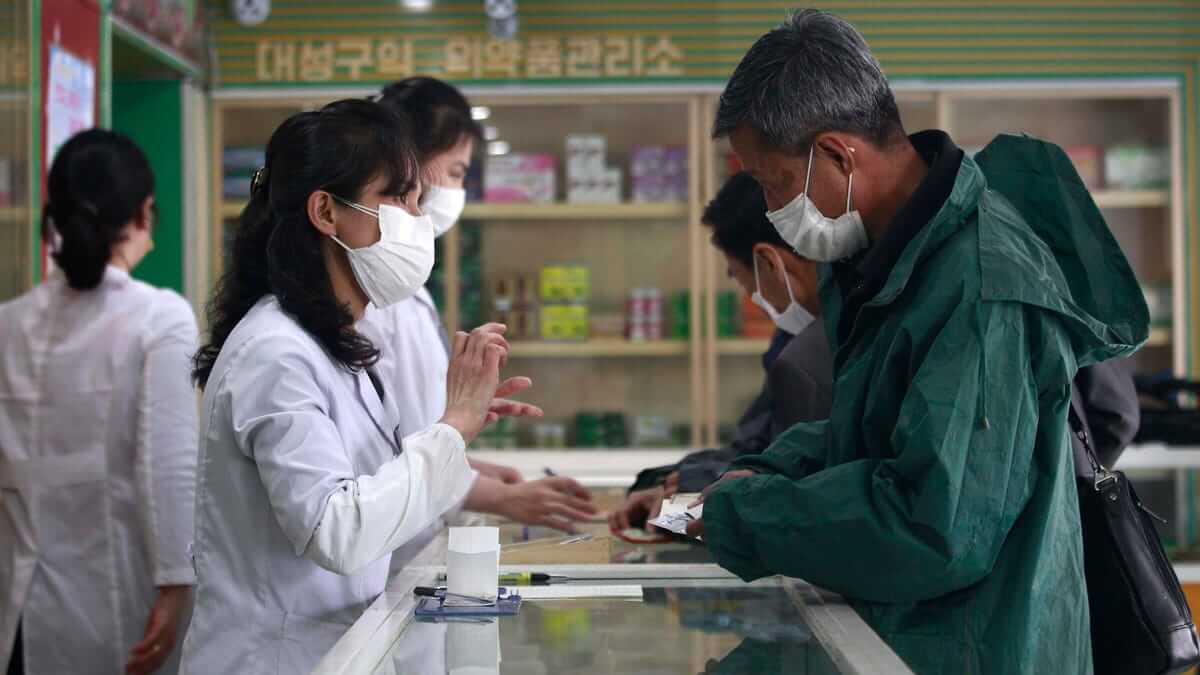Despite its COVID-19 caseload reportedly nearing almost two million amid a “severe” national emergency and nationwide lockdown, North Korea continues to gear up for its first nuclear test since 2017, say the United States and South Korea’s intelligence agencies.
On Thursday, Yonhap News Agency reported that South Korea’s National Intelligence Service said in a closed-door briefing to lawmakers that North Korea is on the verge of launching its seventh nuclear test, having already “completed its preparations.”
Furthermore, Kim Tae-hyo, the first deputy chief of South Korea's presidential National Security Office, said yesterday that an intercontinental ballistic missile (ICBM) test is “imminent.”
The US & #SouthKorea have long viewed the situation in North Korea primarily through the lens of nuclear weapons development.
— Birgit Schwarz (@BirgitMSchwarz) May 19, 2022
With #NorthKoreans facing catastrophe due to #Covid19, it's crucial to address the country’s human rights & humanitarian crisis.https://t.co/J9mGuLJYTo pic.twitter.com/3cGqgJXdhd
In fact, South Korea reported a possible missile test today, though it was not of a nuclear-armed weapon. If it is confirmed, it would be North Korea’s 17th missile test this year, with the latest one being carried out last Thursday. It has also tested the Hwasong-17 supersonic missile earlier this year.
Despite the strict lockdown measures put in place recently, Supreme Leader Kim Jong Un has asked officials to move ahead with “scheduled constructions, agricultural development, and other state projects,” whilst strengthening the country’s defence apparatus, possibly hinting at its continued weapons testing and nuclear programme.
This would be keeping in line with a promise he made at a military parade last month, when he vowed to “continue to take steps to strengthen and develop” the country’s nuclear capabilities “at the highest possible speed.”
These escalatory moves come ahead of United States (US) President Joe Biden’s visit to Japan and South Korea.
In a press conference yesterday, National Security Advisor Jake Sullivan said US intelligence has suggested a “genuine possibility” of “further missile tests,” including long-range and nuclear missile tests before, during, and after Biden’s trip.
In this regard, he said the US is “prepared” to make changes to its military posture to respond to North Korean “provocation.” He added that Washington is “closely” coordinating with South Korea and Japan on the matter and that he had also spoken about the threat with his Chinese counterpart on Wednesday.
Update on North Korea's COVID-19 outbreak:
— BNO|Medriva Newsroom (@medriva) May 13, 2022
- 174,400 new suspected cases, raising the total to 525,400
- 21 new deaths, raising total to 27
- Kim Jong Un says N. Korea facing "greatest turmoil" since founding
- No one in N. Korea is vaccinated
- Nationwide lockdown
These developments come as North Korea descends further into an unmitigated public health catastrophe. state-owned news agency Korean Central News Agency (KCNA) reported on Thursday that since late April, the total number of people with “fevers” has risen to over 1.97 million, of which more than 1.2 million have recovered and at least 740,160 remain under medical treatment. The country’s current death toll stands at 63; however, given the secretive nature of the North Korean regime, the true number could well be higher.
The KCNA added in another report that “emergency epidemic prevention campaign is getting further intensified,” with “all levels taking scientific, technological and practical measures to steadily adjust in a mobile way the emergency steps taken after the maximum emergency epidemic prevention system came into force.”
These measures include setting up additional isolation wards nationwide and “intensified disinfection work” in order to “block the spread vacuum and infection channel of epidemic amid the increasing number of those quarantined at their houses.” Moreover, the agency reported that “thousands of tons of salt were urgently transported to Pyongyang City to produce antiseptic solution.”
I’m becoming convinced that China will end up as closed to foreigners as North Korea. What started as COVID closures will end up as a means unto itself, the party will prefer never to fully reopen the country. There will be no going back to easy in-and-out traveling. Ever.
— Jorge Guajardo ❤️🇺🇦 (@jorge_guajardo) May 16, 2022
As part of the epidemic control, KCNA reported that the Nampho Medical Appliances Factory and other public health sector production units are working “to mass-produce and supply thermometers and other medical appliances to all parts of the country.” Pharmaceutical factories have also increased the “production of injections and traditional Koryo medicines effective in prevention and cure of malicious disease.”
In addition, it reported that scientific research units have strengthened “the work to confirm more concretely the course and the cause of epidemic spread and steadily supplement the contents of the treatment guide” as well as setting the “rational duration of quarantining those with fever and the standard for releasing them.”
Last week, North Korea declared a “severe national emergency” and a nationwide lockdown after reporting its first case of the highly transmissible BA.2 subvariant of the Omicron strain of COVID-19 in the capital Pyongyang.
Pyongyang has previously rejected vaccines offered via the World Health Organisation’s COVAX initiative, possibly because it would have resulted in greater monitoring of its secretive regime. It even rejected an offer of three million vaccine doses of China’s Sinovac vaccine last year. However, on Monday it was reported that three North Korean planes had flown to China and had carried back unknown supplements, which are speculated to be COVID-19 aid.

